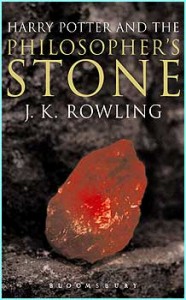 Here are some common mistakes I come across when correcting comprehension answers. These are specific to questions which ask you to discuss elements of the writer’s style.
Here are some common mistakes I come across when correcting comprehension answers. These are specific to questions which ask you to discuss elements of the writer’s style.
1. Beginning with a blandly factual and obvious statement (often simply parroting back the question).
Here’s an example: “In this text there are many features of both argumentative and persuasive writing“. Yes, I know that, I read the question. Slightly better – but only slightly is “We see many examples of both argumentative and persuasive techniques in this passage” (at least this person slightly re-phrased the question, using “techniques” instead of “writing features“, “passage” instead of “text” and admitting that they as a reader exist – “we see“).
How do you FIX IT ?
Offer instead an evaluative and appreciative statement praising the writer’s style (or criticizing it if you don’t like it).
For example: “This text displays an impressive array of both argumentative and persuasive techniques that appeal to and influence the reader’s opinion“. Or look at this example: “In this text I was impressed by both authors ability to persuade the audience to support their cause“. Central to both examples is the idea that you make a judgment (you are impressed or you are aren’t). Both also describe the effect on the reader.
2. Identifying the technique, giving an example, then failing to explain what makes it effective.
For example: “The writer gives us information regarding the number of visitors who visited the zoo last year “More than 900,000 people visited Dublin zoo…50,000 of them were schoolchildren” which she uses to fight her case about why zoos should be left open to the public. I find this piece of information good as it provides you with more knowledge”
How do you FIX IT ?
Be more specific in identifying the technique; avoid repeating the same words over and over (visitors/visited/visited); explain why this technique is effective – how does it effect the reader? how does it strengthen the writer’s argument? Be specific.
Here’s an improved version of the example above:
“The writer presents us with concrete statistics “more than 900,000 people visited Dublin zoo…50,000 of them were schoolchildren” to fight her case as to why zoos should be left open to the public. Her emphasis on numbers convinces us that zoos remain popular with the public and her focus on ‘schoolchildren’ makes us feel guilty at the thought of closing them down, as we would be depriving this group of something they obviously value”.
3. Discussing what makes a technique IN GENERAL effective, but not identifying what makes THIS SPECIFIC EXAMPLE of the technique effective.
In other words, you know why a writer might use a list so you write this down and then pick an example from the text. The problem with this is that you are being asked to demonstrate comprehension skills – do you understand why this writer used this technique in this piece of writing. Do you understand the effect in this specific example?
For example: “The writer also uses a list. She bombards us with information and we feel overwhelmed by the sheer number of points being made, thus we find it difficult to disagree with her as she describes zoos as “A living classroom, conservation centre, animal sanctuary, centre of excellence in animal husbandry, science and research and a major visitor attraction”. Lists can exploit our emotions and sway our opinions if constructed in a manipulative manner.
How do you FIX IT ? Your job is to take your general awareness of the effectiveness of lists and apply it to a specific example. Here’s how it’s done:
“The writer offers a list of vital functions that zoos fulfill describing them as “A living classroom, conservation centre, animal sanctuary, centre of excellence in animal husbandry, science and research and a major visitor attraction”. She bombards us with reasons to support zoos and effectively counters the impression many of us have that their only purpose is to entertain the public. In fact I think she leaves this facet until last on her list (“visitor attraction”) to force us to really consider the other benefits of zoos. She also manipulates us – we experience positive emotions towards zoos because of her use of buzz words (such as “living” “sanctuary” “excellence” and “science and research”) in this list”.
4. Flow from one point to the next.
Do not rely exclusively on the word ALSO. This drives me nuts. There are hundreds of linking phrases out there (if you don’t believe me follow this link) so stop over-using the word also. The word “then” tends to be used too often aswell. It’s fine to use either of these words once, just don’t use them repeatedly. Use paragraphs (even mini paragraphs are much better than no paragraphs at all).
Even if we take the “correct” examples from above, without any link or flow between them, the answer loses some of it’s power. Here it is with no ‘flow’ (except the linking words used within the second paragraph – ‘also’ and ‘in fact’).
This text displays an impressive array of both argumentative and persuasive techniques that appeal to and influence the reader’s opinion. The writer presents us with concrete statistics “more than 900,000 people visited Dublin zoo…50,000 of them were schoolchildren” to fight her case as to why zoos should be left open to the public. Her emphasis on numbers convinces us that zoos remain popular with the public and her focus on ‘schoolchildren’ makes us feel guilty at the thought of closing them down, as we would be depriving this group of something they obviously value. The writer offers a list of vital functions that zoos fulfill describing them as “A living classroom, conservation centre, animal sanctuary, centre of excellence in animal husbandry, science and research and a major visitor attraction”. She bombards us with reasons to support zoos and effectively counters the impression many of us have that their only purpose is to entertain the public. In fact I think she leaves this facet until last on her list (“visitor attraction”) to force us to really consider the other benefits of zoos. She also manipulates us – we experience positive emotions towards zoos because of her use of buzz words (such as “living” “sanctuary” “excellence” and “science and research”) in this list.
How do I FIX IT ? Consider how much better it is when you add some flow – and how simple it is to do:
This text displays an impressive array of both argumentative and persuasive techniques that appeal to and influence the reader’s opinion.
Early on, the writer presents us with concrete statistics “more than 900,000 people visited Dublin zoo…50,000 of them were schoolchildren” to fight her case as to why zoos should be left open to the public. Her emphasis on numbers convinces us that zoos remain popular with the public and her focus on ‘schoolchildren’ makes us feel guilty at the thought of closing them down, as we would be depriving this group of something they obviously value.
To strengthen her viewpoint the writer then offers a list of vital functions that zoos fulfill describing them as “A living classroom, conservation centre, animal sanctuary, centre of excellence in animal husbandry, science and research and a major visitor attraction”. She bombards us with reasons to support zoos and effectively counters the impression many of us have that their only purpose is to entertain the public. In fact I think she leaves this facet until last on her list (“visitor attraction”) to force us to really consider the other benefits of zoos. She also manipulates us – we experience positive emotions towards zoos because of her use of buzz words (such as “living” “sanctuary” “excellence” and “science and research”) in this list.
5. Vary your phrasing.
Using the same words or phrases repeatedly suggests to the reader that you don’t have a very sophisticated vocabulary. It is important to keep linking back what you’ve said to the question asked, but use synonyms instead of parroting the exact wording of the question over and over. Don’t begin every point in the same way. It’s annoying and it’s a waste of time and words.
For example: “The writer uses effective persuasive and argumentative writing when she uses a list”… “The writer also uses effective persuasive and argumentative writing when she uses a rhetorical question”…”The final use of persuasive and argumentative writing I found effective was her ability to refute counter arguments…”
How do I FIX IT ?
Use synonyms. Don’t allow yourself to become a parrot.
“The writer uses lists effectively….” “I particularly liked the way she used a rhetorical question to grab my attention… “Finally, her ability to refute counter arguments was for me the most powerful feature of her argumentative style…”
6. Work your quotes naturally into the grammar of your sentence.
Don’t just plonk a quote onto the page as an add on. The difference between integrating quotes – and not – is small but significant. There is a certain overlap here with point 4 above – your answer must flow…
For example: “The writer uses emotive language. “Modern zoos are managed by caring professionals who devote their lives to the welfare of animals”. This is an establishment which views their animals as a top priority”.
How do I FIX IT ?
“The writer uses emotive language when she describes “modern zoos” as places which are “managed by caring professionals who devote their lives to the welfare of animals”. Here she chooses the words “caring” and “devoted” to imply that the workers are passionate and dedicated, viewing the animals as their top priority”.

 A little more recently, after I’d already begun my teaching career, I remember mocking any of my friends who chose one of the ‘adult’ dust jackets when purchasing the Harry Potter books. I thought it somehow foolish or dishonest not to admit that yes, you were reading a kids book, and by the way you were bloody well enjoying it too!
A little more recently, after I’d already begun my teaching career, I remember mocking any of my friends who chose one of the ‘adult’ dust jackets when purchasing the Harry Potter books. I thought it somehow foolish or dishonest not to admit that yes, you were reading a kids book, and by the way you were bloody well enjoying it too!






